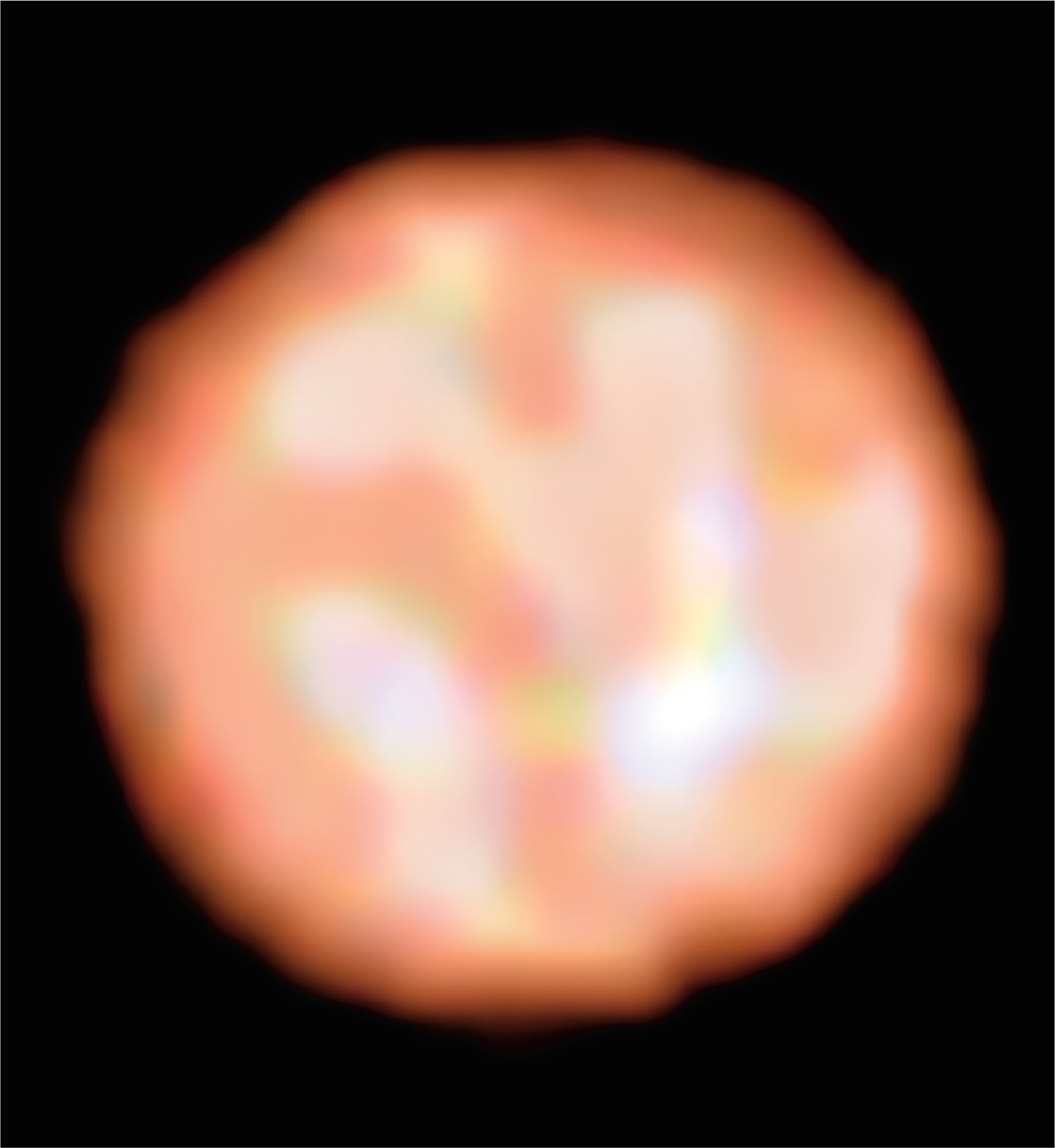As @uhoh has pointed out, optical interferometers only a little bigger than the ones we have now would allow imaging of large-scale features of large planets around nearby stars.
For a more detailed view of smaller or more distant planets we either need much larger interferometers (the optical equivalent of VLBI techniques used for radio) or to use something exotic like a gravitational lens.
We can do the numbers for optical VLBI. Suppose for example we could build an array of telescopes distributed across the Moon's disk for an aperture of 3000km (and no atmospheric interfernce), at (for convenience of arithmetic) 300nm in the near UV. We would have a resolution of about $10^{-13}$ radians, which gives a resolution of 1km at 1 light year, or 1000km (a continent) at 1000 ly.
Somewhat more speculatively, if we could put our array into solar orbits the same size as that of Saturn and somehow figure out how to combine the signals, we would have an aperture of 3 bn km, and resolution of 1mm at 1ly or a few km at Andromeda.
Using the Sun's gravitational lens is tricky, but potentially very powerful. There is a very readable article assessing some of the problems:
Abstract
The gravitational field of the sun will focus light from a distant source to a focal
point at a minimal distance of 550 Astronomical Units from the sun. A proposed
mission to this gravitational focus could use the sun as a very large lens, allowing (in
principle) a large amplification of signal from the target, and a very high magnification.
This article discusses some of the difficulties involved in using the sun as such a
gravitational telescope for a candidate mission, that of imaging the surface of a
previously-detected exoplanet. These difficulties include the pointing and focal length,
and associated high magnification; the signal to noise ratio associated with the solar
corona, and the focal blur. In addition, a method to calculate the signal gain and
magnification is derived using the first-order deflection calculation and classical optics,
showing that the gain is finite for an on-axis source of non-zero area.
One big issue is that to image an object in a certain direction, you need to go 550AU from the Sun in the exactly opposite direction, and the field of view is very narrow, so much so that an exoplanet would move across the field of view of a reasonable sized spacecraft in a fraction of a second due to its motion around its star.
While it might be possible to gain useful scientific information from a mission like this, it will take a lot of post-processing to produce anything recognisable as an image to a human eye.



